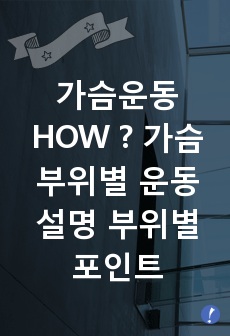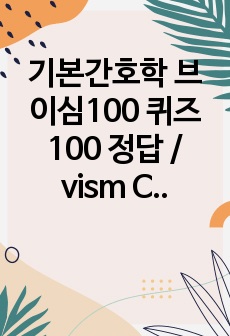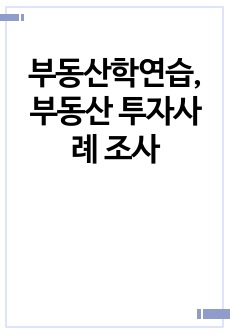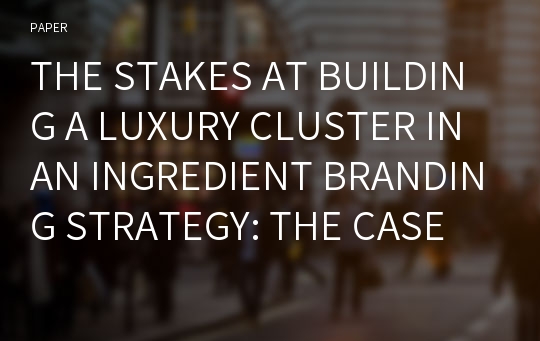THE STAKES AT BUILDING A LUXURY CLUSTER IN AN INGREDIENT BRANDING STRATEGY: THE CASE OF CALAIS LACE
* 본 문서는 배포용으로 복사 및 편집이 불가합니다.
서지정보
ㆍ발행기관 : 글로벌지식마케팅경영학회(GFMC)
ㆍ수록지정보 : GFMC Session1
ㆍ저자명 : Anne-Flore Maman Larraufie
ㆍ저자명 : Anne-Flore Maman Larraufie
영어 초록
Suppliers of luxury fashion fabrics in France have historically been working in fierce competitive ways. Usually family-owned businesses, they are working for the same clients, be it in fast fashion, premium fashion or luxury (including Haute-Couture). Calais lace-makers are no exception. However, what could have been described as same emulation in the past turns out to be a weakness in the XXIst century, with booming foreign competition from developing countries. Up to now, they’ve been unable to join their forces to collaborate on projects such as big orders from fashion brands.Created in 1952, the Dentelle de Calais® label can be used by the lace manufacturers using Leavers machines, and active members to the French Federation of Lace and Embroidment (which is the IP owner of the label). This encompasses the places of Calais (traditionally manufacturing lace for undergarments) and of Caudry (more focused on clothes). Caudresian lace has become famous as a proud supplier for the Duchess of Cambridge’s wedding dress or for the awarded costumes in The Great Gatsby. However, it appears that the label is currently dying, being unequally used by the various lace-makers and retailers / brand owners of clothes or undergarments.
In January 2014, a repositioning of the label has been initiated. We’ve been asked to do it and decided to use action research to complete this task. The ultimate objective was to give a new identity to the label and DNA to the brand, which could be used by any lace-maker using Leavers machines in a way enhancing his own brand equity. In short, we aim at crafting an ingredient branding strategy.
The present action research, on top of solving the client’s issues, aimed at enhancing knowledge on several key topics. First, we wanted to understand better information processes in a cluster that is bi-located, and with internal “fights”. Then, another objective was to grasp the various points that are at stake when clustering happens in-between non-aligned partners. More specifically, we wanted to uncover how decisions happened, and stimulate new ways for decision-making optimization. A last objective was to reflect upon ingredient collective-branding strategic developments, as most literature on branding concerns individual brands and not collective ones. As these become a major trend in these days, we believe academic research has a great role to play. Our research is a first step in this direction.
To do this, various data collection and analysis methods have been used:
• Interviews with all types stakeholders (fashion designers, purchasers, marketers, journalists, students in fashion or business schools, etc.), to understand their present vision of lace fabric in general and whether they would or would not use it (including in their sales argument). Then similar discussion on Calais lace is conducted. Open-coding and axial coding are then done to identify the values associated with lace and Calais lace, for each stakeholder-category.
• Semiotic analysis of the label, to understand the Ethics and Aesthetics of this collective brand. This includes content and discourse analyses, visual (iconic and plastic) analysis of the communication tools including the logo, etc. The current label positioning is presented thanks to the greimasian semiotic square .
• Non-participant observation and non-directed interviews with all lace-makers to get each one’s perspective on the label. Open coding and axial coding (Strauss & Corbin) are used to identify the relevant categories and sub-categories underlying the dicsourses.
• Lexical analysis of all verbatims will help identify the proper jargon to reconcile stakeholders and manufacturers.
• Market analysis on the various relevant markets: Middle East, Europe and Asia.
• Structural semiotics are used to wrap-up findings and craft a new brand identity (Greimas’ semiotic square and narrative scheme).
More than a simple action, this ingredient-branding collective action will help foster a collective conscience around the preservation of an endangered manufacturing sector of activity, paving the way for a future industrial cluster.
Besides the managerial outcomes, this project aimed at (1) Understanding better information processes in a cluster that is bi-located, and with internal “fights”; (2) Grasping the various points that are at stake when clustering happens in-between non-aligned partners, esp. in terms of decision-making processes; and (3) Reflecting upon ingredient collective-branding strategic developments.
Our paper presents all these points, providing practical and theoretical insights for the luxury community in general.
참고 자료
없음"GFMC Session1"의 다른 논문
 FAST AND SLOW FASHION BRANDS IN DEVELOPING SUSTAINABLE ..6페이지
FAST AND SLOW FASHION BRANDS IN DEVELOPING SUSTAINABLE ..6페이지 “WHAT IF A CELEBRITY AND A BRAND CO-CREATE A NEW COLLEC..7페이지
“WHAT IF A CELEBRITY AND A BRAND CO-CREATE A NEW COLLEC..7페이지 THE INSTAGRAM’S STRATEGY IN ENGAGING THE CUSTOMER’S LOY..3페이지
THE INSTAGRAM’S STRATEGY IN ENGAGING THE CUSTOMER’S LOY..3페이지 THE PARTICULARITIES OF NEW PRODUCT DEVELOPMENT IN THE T..5페이지
THE PARTICULARITIES OF NEW PRODUCT DEVELOPMENT IN THE T..5페이지 THE LONE CHOCOLATE BAR: THE INFLUENCE OF PERCEIVED SCAR..6페이지
THE LONE CHOCOLATE BAR: THE INFLUENCE OF PERCEIVED SCAR..6페이지 ADS AS WORKS OF ART: MEASURING ADVERTISING IMMERSION3페이지
ADS AS WORKS OF ART: MEASURING ADVERTISING IMMERSION3페이지 ECONOMIES OF SMALL: NICHE STRATEGIES AND SUCCESS FACTOR..8페이지
ECONOMIES OF SMALL: NICHE STRATEGIES AND SUCCESS FACTOR..8페이지 THE INFLUENCE OF ONLINE CUSTOMER REVIEWS ON RETAILERS' ..6페이지
THE INFLUENCE OF ONLINE CUSTOMER REVIEWS ON RETAILERS' ..6페이지 IS THE ARTIFICATION PROCESS PERCEIVED BY FINAL CONSUMER..6페이지
IS THE ARTIFICATION PROCESS PERCEIVED BY FINAL CONSUMER..6페이지 THE ODD EVEN PRICE PARADOX IN THE FASHION LUXURY SECTOR6페이지
THE ODD EVEN PRICE PARADOX IN THE FASHION LUXURY SECTOR6페이지


























